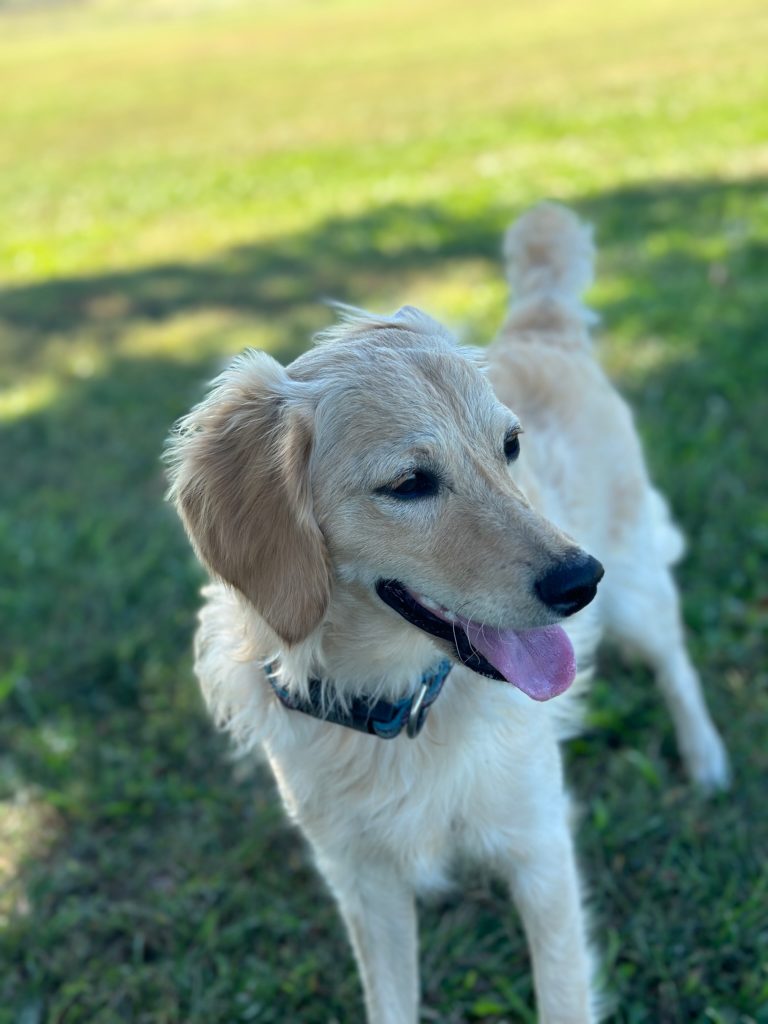
Introduction: Owning a dog is a joyful and fulfilling experience, but it comes with its fair share of challenges. One common challenge that dog owners face is managing their pet’s mischief and behavioral issues. While every dog has its own unique personality, one effective way to curb mischievous behavior is by keeping your dog active and engaged. At Robyns Nest Mini Goldens, we understand the importance of physical and mental stimulation for dogs. In this comprehensive guide, we will explore the relationship between keeping your dog active and reducing mischief, providing you with valuable insights and strategies to create a well-behaved and content canine companion.
The Connection Between Activity and Behavior: Before delving into the strategies for keeping your dog active, it’s essential to understand the correlation between physical and mental activity and your dog’s behavior:
Energy Release: Dogs have varying energy levels depending on their breed, age, and individual temperament. Engaging in physical activities helps them release excess energy, reducing restlessness and destructive behavior.
Mental Stimulation: Mental stimulation through activities and training exercises keeps your dog’s mind engaged. A stimulated mind is less likely to engage in destructive behaviors born out of boredom.
Bonding and Socialization: Active dogs often have opportunities to interact with other dogs and people. Socialization fosters positive behavior by exposing your dog to various experiences and teaching them appropriate interactions.
The Importance of Regular Exercise: Regular exercise is a fundamental aspect of keeping your dog active and well-behaved:
Physical Health: Exercise promotes physical health by helping your dog maintain a healthy weight, strong muscles, and good cardiovascular health.
Mental Health: Physical activity stimulates your dog’s brain and prevents mental stagnation. It can reduce anxiety and stress, leading to a calmer demeanor.
Behavioral Improvement: Exercise contributes to behavioral improvement by addressing common issues such as excessive barking, digging, chewing, and restlessness.
Strategies for Keeping Your Dog Active: To effectively manage your dog’s mischief through activity, consider the following strategies:
Daily Walks: Regular walks are an excellent way to keep your dog active while providing them with mental stimulation through exploration of their environment. Aim for at least one or two walks a day, adjusting the length and pace based on your dog’s breed and age.
Interactive Play: Engage in interactive play with toys that encourage physical activity. Balls, frisbees, and tug-of-war toys are great options. Interactive toys that dispense treats can also provide mental stimulation.
Obedience Training: Incorporate obedience training into your daily routine. Teaching your dog commands and tricks not only keeps their mind active but also strengthens the bond between you and your furry friend.
Agility Training: If your dog enjoys physical challenges, consider agility training. Set up a backyard obstacle course or join a local agility club. This activity combines mental stimulation with physical exercise.
Fetch and Retrieval Games: Playing fetch or retrieval games taps into your dog’s natural instincts and provides excellent exercise. These activities can be adapted for both indoor and outdoor play.
Dog Sports: Explore dog sports such as agility, flyball, or obedience competitions. Engaging in organized activities like these offers socialization opportunities and encourages physical and mental exertion.
Swimming: Swimming is an excellent low-impact exercise for dogs. If you have access to a safe swimming area, introduce your dog to water play. Many dogs enjoy it and find it mentally and physically stimulating.
Group Activities: Participate in group activities such as dog park visits or group walks. These outings provide socialization and play opportunities while allowing your dog to burn off energy.
Rotate Toys and Activities: Keep your dog’s interest by rotating toys and activities. Introducing novelty can stimulate their curiosity and prevent boredom.
Consider Your Dog’s Age and Breed: It’s essential to tailor your dog’s activities to their age and breed characteristics:
Puppies: Puppies have boundless energy but require age-appropriate activities. Short, frequent play sessions and socialization are key during their early months.
Adult Dogs: Adult dogs benefit from regular exercise routines, obedience training, and mentally stimulating activities.
Senior Dogs: Senior dogs may require gentler activities but still benefit from shorter walks and interactive playtime.
Breed Characteristics: Consider your dog’s breed characteristics. Breeds with high energy levels, such as Border Collies or Labrador Retrievers, need more exercise and stimulation compared to breeds that are less active.
The Role of Routine: Establishing a routine is vital for keeping your dog active and well-behaved. Dogs thrive on consistency, and a regular schedule can help manage their energy and behavior effectively:
Feeding Schedule: Maintain a consistent feeding schedule, as it can impact your dog’s bathroom habits and energy levels.
Activity Times: Set specific times for walks, play, and training sessions. Consistency helps your dog anticipate and look forward to these activities.
Rest Periods: Ensure your dog has ample rest periods between activities to prevent overexertion and maintain a balanced routine.
Monitoring and Adjusting: Pay close attention to your dog’s behavior and energy levels. If your dog continues to exhibit mischief or restlessness despite regular activity, consider the following adjustments:
Increase Activity: Some dogs may require more exercise and mental stimulation. Increase the duration or intensity of activities to meet their needs.
Training and Enrichment: Invest in puzzle toys, treat-dispensing toys, or food puzzles to provide mental enrichment even during downtime.
Consult a Professional: If behavioral issues persist, consult a professional dog trainer or behaviorist for guidance and customized solutions.
Conclusion: In conclusion, keeping your dog active is a key ingredient in managing and reducing mischief in your furry friend. By understanding the relationship between activity and behavior, incorporating regular exercise into your routine, and tailoring activities to your dog’s age and breed, you can create a happier and more well-behaved canine companion. At Robyns Nest Mini Goldens, we believe that an active and stimulated dog is a content and well-balanced dog. Embrace the joy of keeping your dog active, and you’ll not only enhance their physical and mental well-being but also strengthen the bond between you and your loyal four-legged companion.